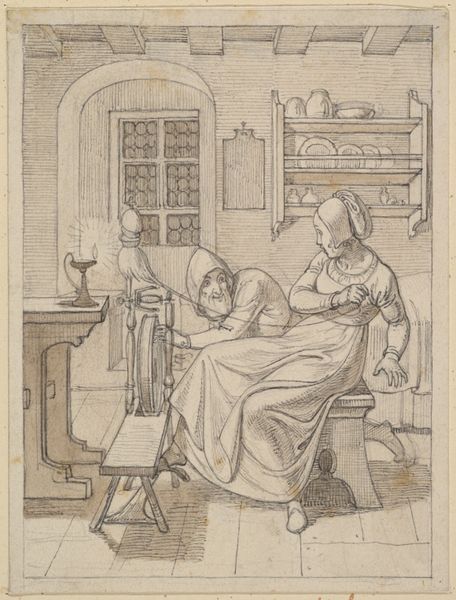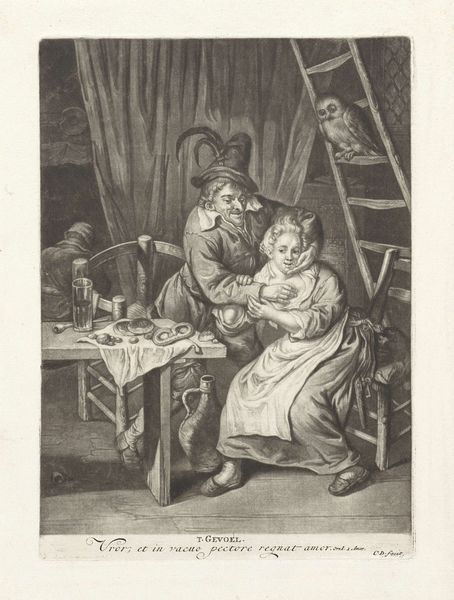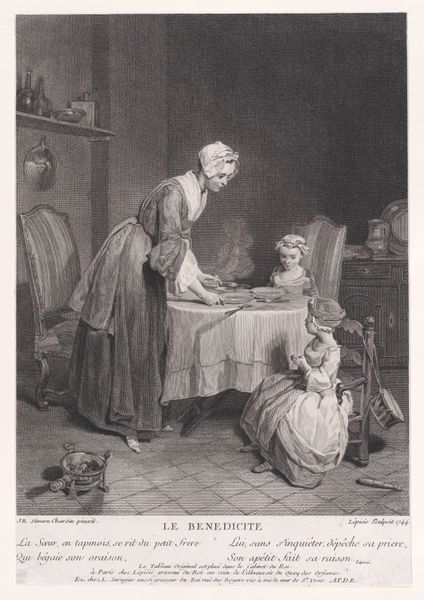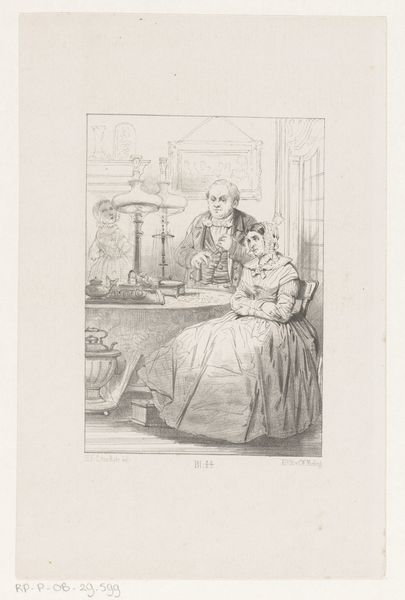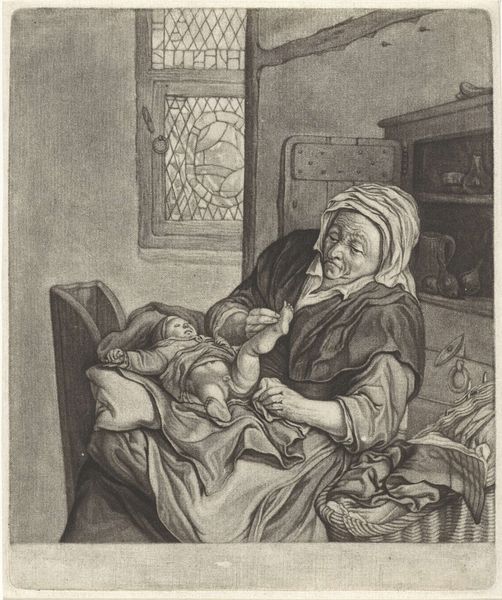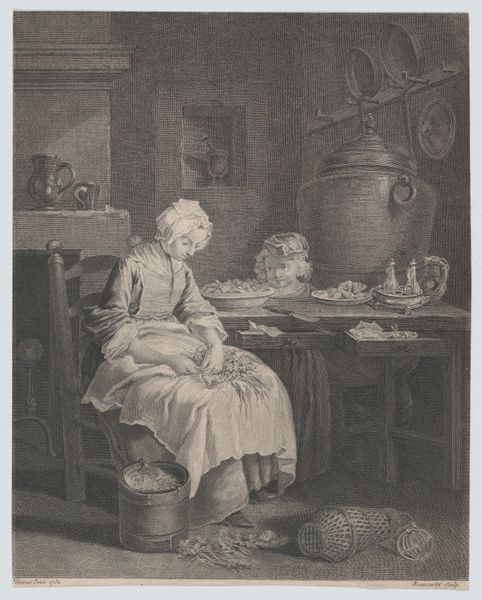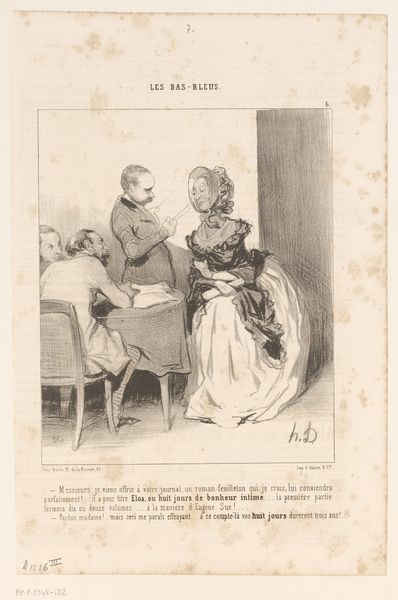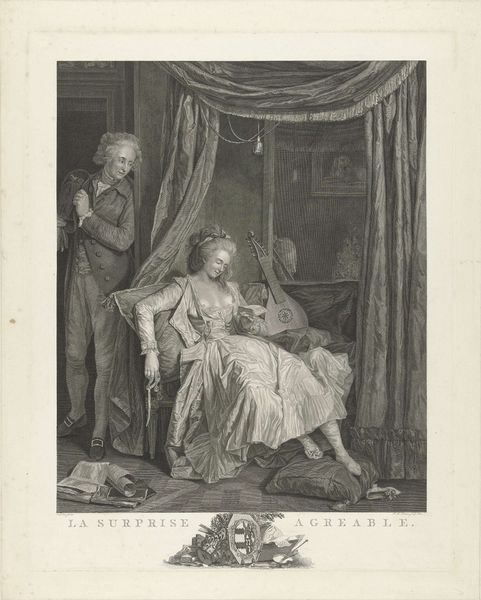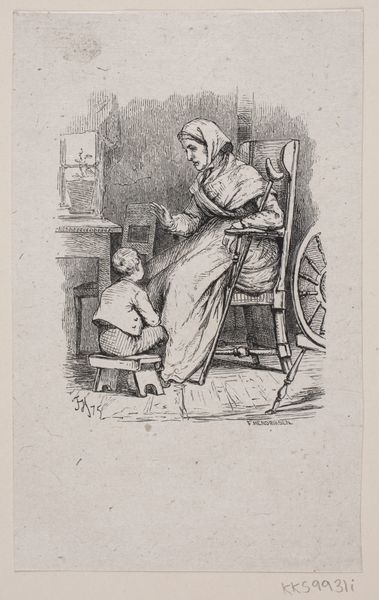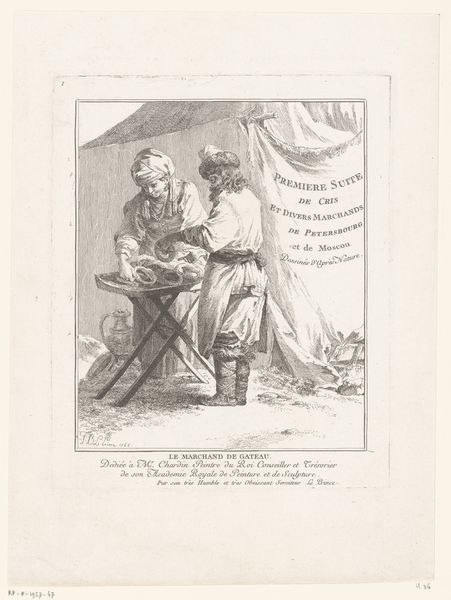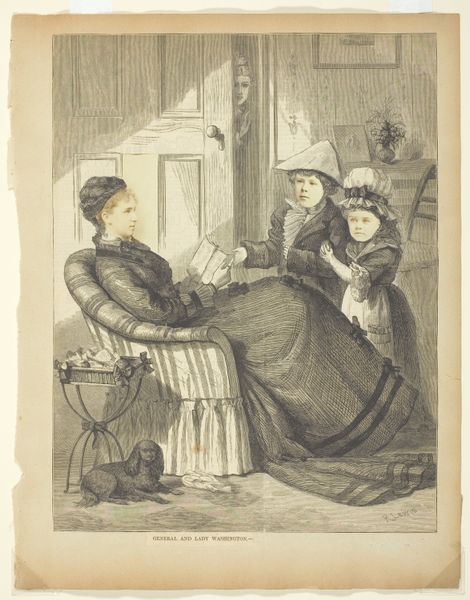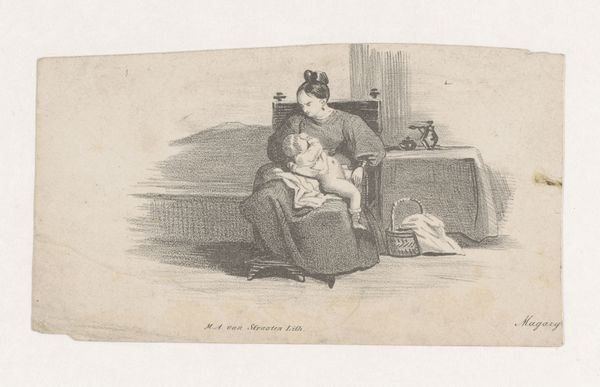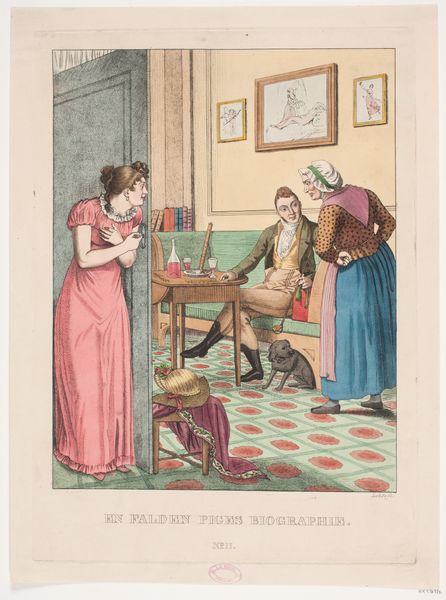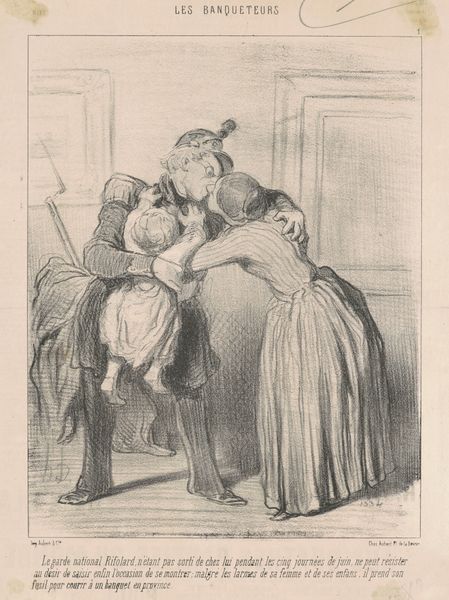
drawing, ink, pencil
#
portrait
#
drawing
#
aged paper
#
light pencil work
#
narrative-art
#
pencil sketch
#
old engraving style
#
sketch book
#
personal sketchbook
#
ink
#
pen-ink sketch
#
pencil
#
sketchbook drawing
#
genre-painting
#
storyboard and sketchbook work
#
sketchbook art
#
realism
Dimensions: height 159 mm, width 136 mm
Copyright: Rijks Museum: Open Domain
Curator: What strikes me first is the intimacy captured in this drawing. Editor: Intimacy indeed. We’re looking at a pencil and ink drawing titled "Dienstmeid en jongen schillen aardappelen", or "Maid and Boy Peeling Potatoes," by Gillis Bernhard Mulder, likely created sometime between 1885 and 1938. The composition immediately draws the eye into the shared activity. Curator: Precisely! There's such a strong sense of quiet domesticity. The potato, of course, becomes symbolic. Consider its grounding, its connection to the earth and sustenance. Here, it is both literal food and representative of labor, survival, the cycles of daily life. It feels particularly charged given the economic realities many faced during that period. Editor: A nice point. The hatching and cross-hatching certainly contributes to this serious, yet intimate mood. I notice how the artist uses a limited range of tones, achieving contrast through the density and direction of these lines. The overall effect lends a subdued, almost nostalgic feel to the scene. Notice how this restricted tonal range heightens our focus on the linearity, the pure form. Curator: Absolutely. That detailed rendering strengthens the narrative. Observe the maid, perhaps a mother, teaching a boy to peel potatoes. Food preparation in a household connects them to something beyond themselves—to family history, social expectations, gendered roles. Peeling those potatoes links them to their past. This seemingly mundane activity resonates with deep significance. Editor: I agree. Speaking of connections, the composition draws attention to a few of those formal contrasts I was talking about earlier. Look at the way the curvilinear lines describing the figures' bodies play against the rectilinear geometry of the architecture in the background and on the foot stool. And, observe the rough texture on the bucket compared to the details on the facial features and the potted flowers in the background. Curator: To me, even the light pouring in from the window isn’t just light. It's also about hope. In a broader symbolic reading, we understand even hope as being tied to action and shared familial support. It goes hand-in-hand with sustenance and labor. Editor: An enlightening perspective. Ultimately, what remains with me is the skillful execution through minimal means. This quiet scene leaves us pondering so much that resonates beyond its immediate subject matter. Curator: Agreed. It encourages us to look deeper into the significance of these simple acts, connecting us to the threads of history and human experience woven through everyday moments.
Comments
No comments
Be the first to comment and join the conversation on the ultimate creative platform.
